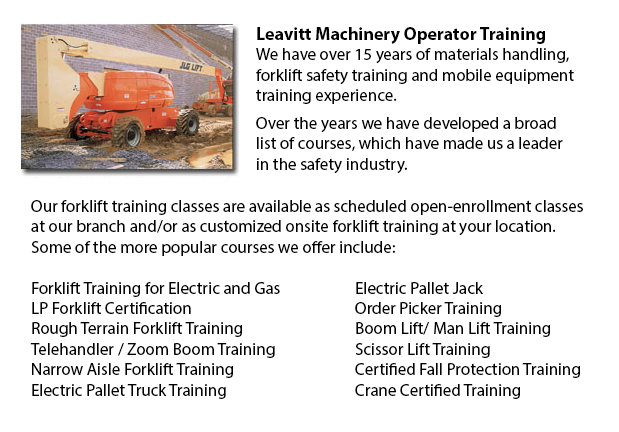
Boom Lift Certification Langley - Making use of elevated work platforms allow for maintenance operations and work to be performed at elevated work heights which were otherwise unreachable. Boom Lift Certification Training educates workers about safely operating boom lifts and scissor lifts.
Despite the range in lift style, applications and site conditions, all lifts have the potential for death or serious injury when not safely operated. Electrocution, falls, crushed body parts, and tip-overs could be the tragic outcome of incorrect operating procedures.
To be able to avoid aerial lift accidents, boom lift operators must be trained by qualified workers in the safe operation of the certain kind of aerial lift they would be using. Aerial lifts must not be be modified without the express permission of other recognized entity or the manufacturer. If you are renting a lift, make certain that it is properly maintained. Before using, controls and safety devices need to be checked to ensure they are functioning correctly.
It is essential to follow safe operating procedures in order to prevent workplace incidents. Driving an aerial lift while the lift is extended must not be carried out, nevertheless, some models are designed to be driven when the lift is extended. Set outriggers, if available. Always set brakes. Avoid slopes, but when needed use wheel chocks on slopes which do not go beyond the manufacturer's slope limits. Follow load and weight limitations of the manufacturer. When standing on the boom lift's platform, use a safety belt with a two-foot lanyard tied to the boom or basket or a full-body harness. Fall protection is not necessary for scissor lifts that have guardrails. Never climb or sit on guardrails.
This course comprises the following topics: training and certification; safety guidelines to prevent a tip-over; slopes and surface conditions; inspecting the travel path & work area; other guidelines for maintaining stability; stability factors; weight capacity; leverage; testing control functions; pre-operational inspection; safe operating practices; mounting a motor vehicle; safe driving procedures; overhead obstacles and power lines; PPE and fall protection; using lanyards and harness; and avoiding falls from platforms.
The successful trainee will learn the following: training and authorization procedures; pre-operational inspection procedures; how to prevent tip-overs; factors affecting the stability of scissor and boom lifts; how to use PPE, how to use the testing control functions and fall prevention strategies.
-
Boom Lift Training Langley
Boom Lift Training Langley - Elevated work platforms, likewise referred to as aerial platforms, enable workers to carry out tasks at heights which would otherwise be unreachable. There are various types of lifts intended for various site applications... More -
Wheel and Track Loader Training in Langley
Lift trucks are available in a variety of various units that have varying load capacities. The majority of typical lift trucks used in warehouse settings have load capacities of 1-5 tons. Larger scale models are used for heavier loads, like loading s... More -
Counterbalance Forklift License Langley
Counterbalance Forklift License Langley - When operated by completely trained operators, forklifts could become a major advantage for firms and companies. We can offer your employees a thorough training program which consists of all factors of operat... More -
Aerial Lift Ticket Langley
Aerial Lift Ticket Langley - A boom truck is frequently recognized by the cable and telephone company vans that have the elongated arm folded over their roofs. Commonly, a bucket-like apparatus sits at the extension of extendable arms. Often termed a... More -
Aerial Lift Training Langley
Aerial Lift Training Langley - An aerial work platform is a mechanized access platform. This particular device provides access to otherwise not accessible places for equipment or people. Likewise known as an aerial device or elevating work platform,... More -
Wheel Loader Operator Training Langley
Wheel Loader Operator Training Langley - To be able to raise considerable weights, industrial cranes utilize pulleys and levers. In the past, Romans utilized cranes to construct huge monuments making the origin of these equipment at least two thousan... More -
Manlift Safety Training Langley
Manlift Safety Training Langley - It is important for competent Manlift operators to be aware of the connected dangers which come with particular kinds of scissor lifts. They must be able to operate the scissor lift in a way that protects not just th... More -
Zoom Boom Ticket Langley
Zoom Boom Ticket Langley - Zoom Boom Training focuses on properly training potential operators on variable reach forklifts. The training objectives include gaining the understanding of the machine's physics and to be able to define the tasks of the o... More

Forklift Training Langley
TOLL FREE: 1-888-254-6157
Langley, British Columbia
forklifttraininglangley.com
Email Us
About Us


